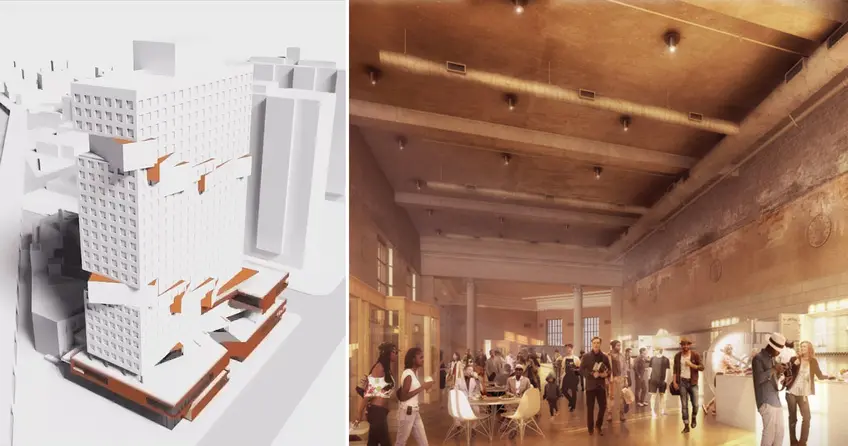 Capture from 3D animation showing the design process for 24 Boerum Street (via Eran Chan/ODA) | Market hall rendering credit of Blesso Properties
Capture from 3D animation showing the design process for 24 Boerum Street (via Eran Chan/ODA) | Market hall rendering credit of Blesso Properties
As New York City remains in the grip of a severe housing crisis, creative residential solutions such as co-living are becoming more commonplace. One of the city’s largest such projects is coming to 24 Boerum Street at the junction of Williamsburg and Bushwick, where The Collective, a London-based brand behind the world’s largest co-living community, plans to build a 28-story, nearly 300,000-square-foot development.
The Department of Buildings filings indicate hotel rooms on the lower ten floors and residences above, although it is yet unclear whether both or just one of the two components represents co-living space (which is an understandable point of confusion, since co-living is something of a mix between a hotel, serviced apartments, and traditional rentals).
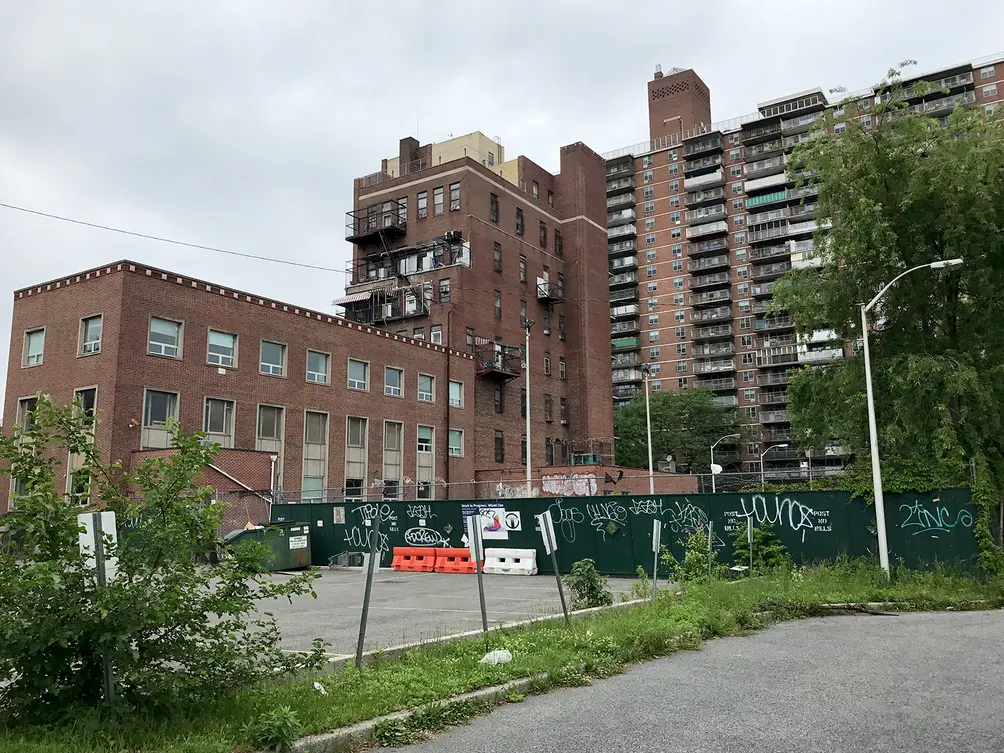 Project site
Project site
The project sits across from the Lorimer Street station of the elevated J and M trains and half a block away from the Broadway station of the G train, both of which should justify the bulk of the project. The 319-foot-tall tower is near the high-rises of the Lindsay Park Houses, where seven 22-story towers with around 2,700 units comprise the largest affordable cooperative in Brooklyn. Those towers and the future 24 Boerum will surround Sternberg Park, the largest green space in the area.
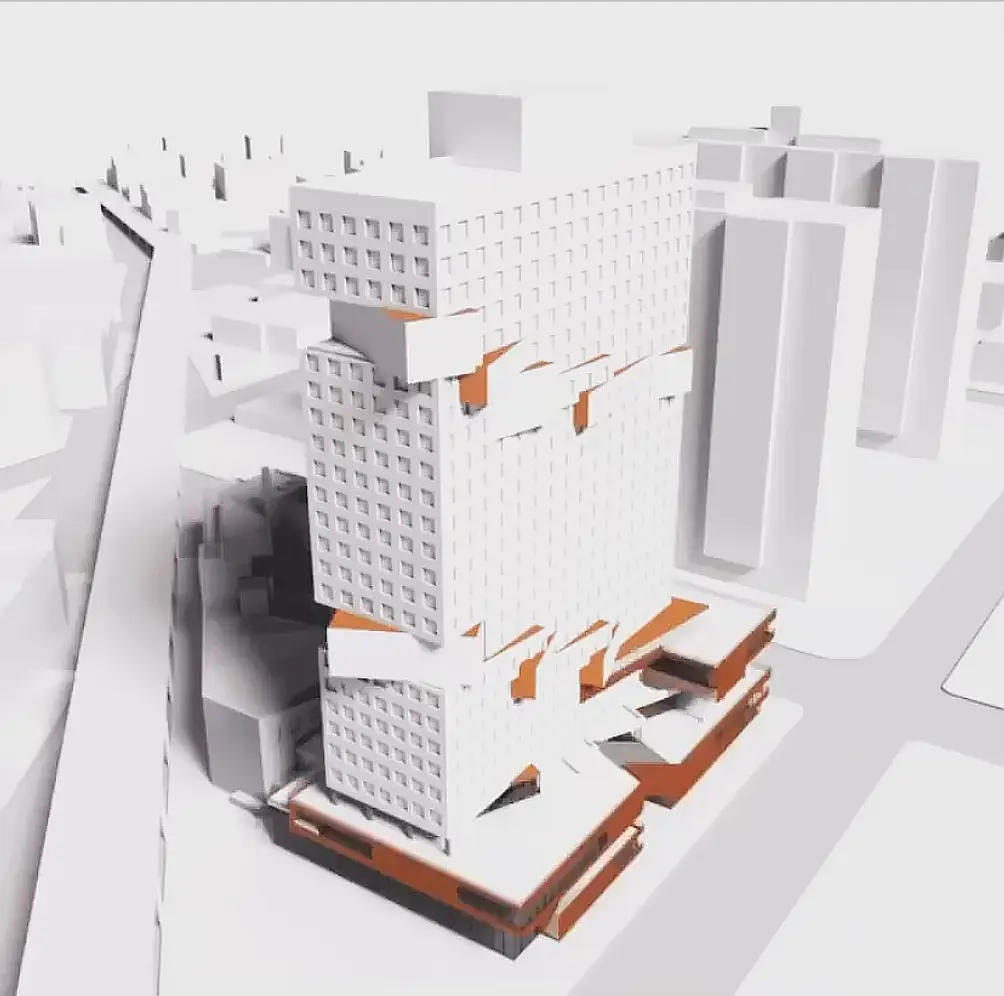 (Credit: Eran Chen of ODA Architecture)
(Credit: Eran Chen of ODA Architecture)
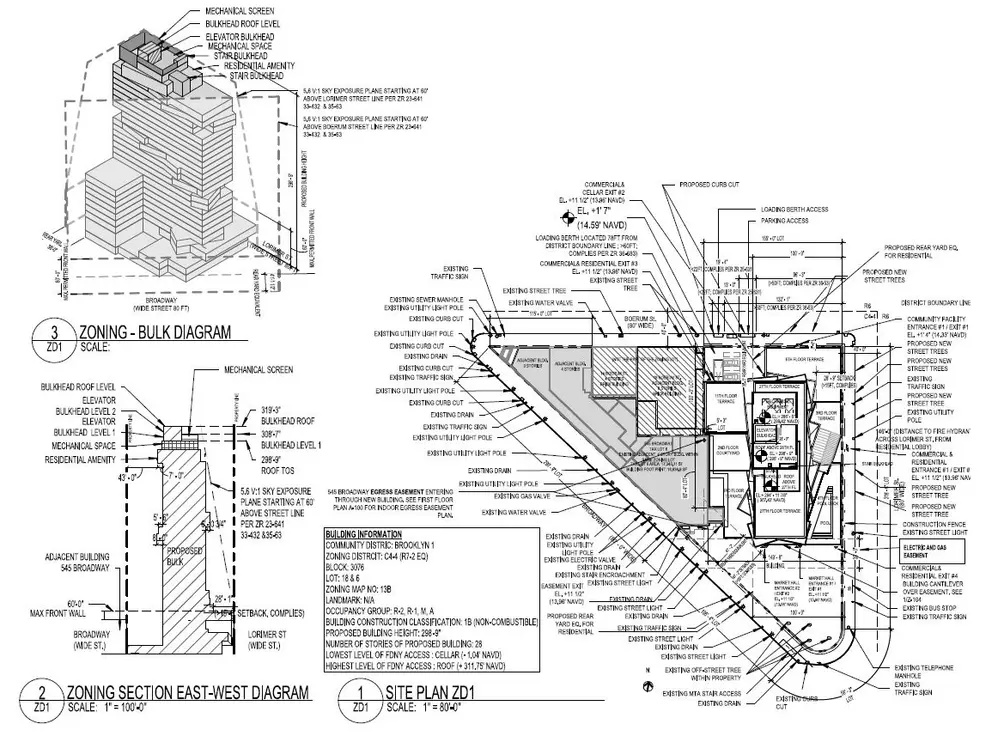 via NYC ZD-1 Diagram
via NYC ZD-1 Diagram
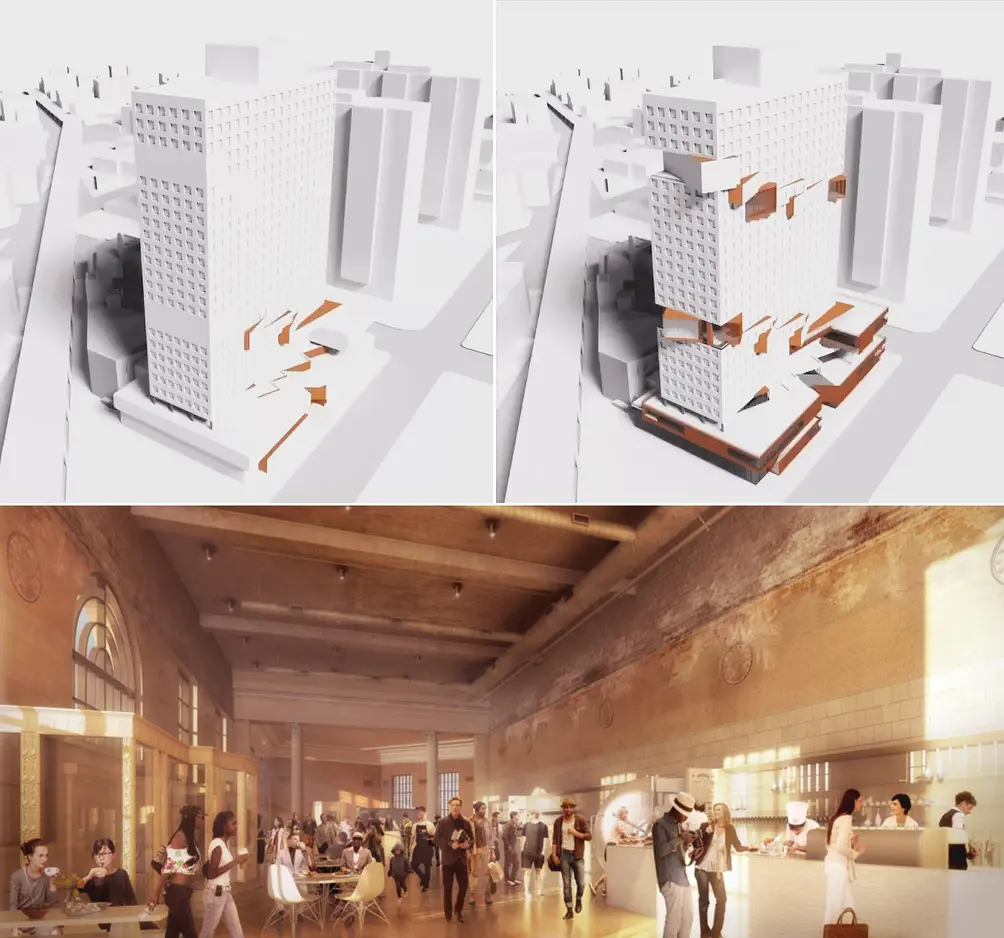 Captures from 3D animation showing the design process for 24 Boerum Street (via Eran Chan/ODA) | Market hall rendering credit of Blesso Properties
Captures from 3D animation showing the design process for 24 Boerum Street (via Eran Chan/ODA) | Market hall rendering credit of Blesso Properties
Eran Chen, principal of increasingly prolific ODA Architecture, is both the project’s designer and architect of record (a somewhat uncommon arrangement in a city where, in large projects, the roles often go to separate firms). Chen’s video posted on the architect’s Instagram titled “Unboxing ‘the collective’” (since taken down for one reason or another) and diagrams shown on DOB filings show an “average”-looking tower slab, not too dissimilar from the next-door co-op slabs from the 1960’s. However, shifting and twisting blocks in the tower midsection deconstruct the “box” in an eye-catching manner while creating uniquely shaped terraces.
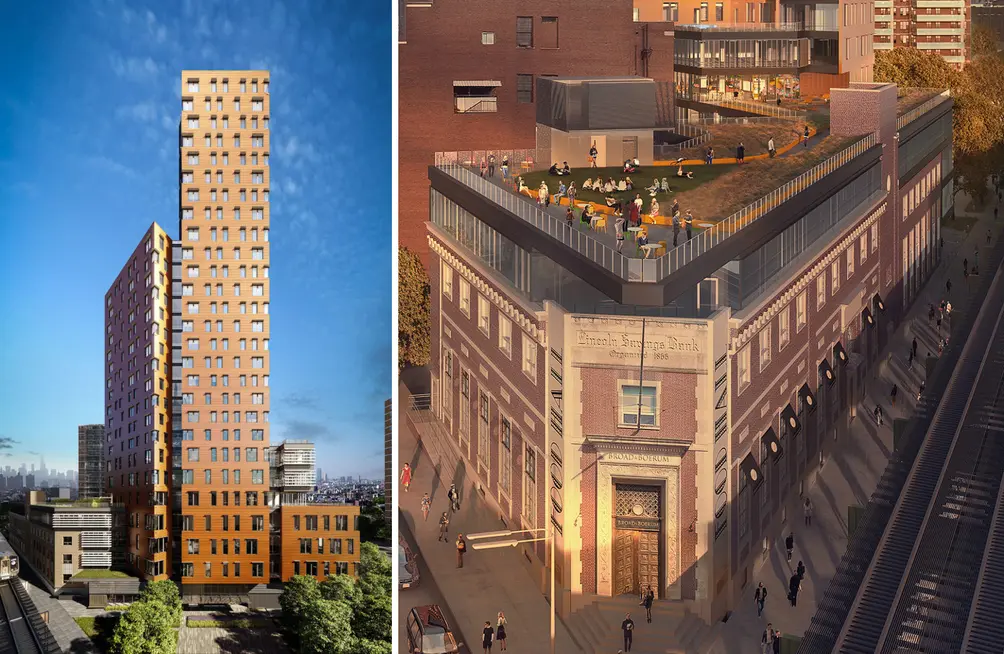 The prior plan by Blesso Properties would have brought a 27-story rental tower and an adaptive reuse of the early 20th century Lincoln Savings Bank building
The prior plan by Blesso Properties would have brought a 27-story rental tower and an adaptive reuse of the early 20th century Lincoln Savings Bank building
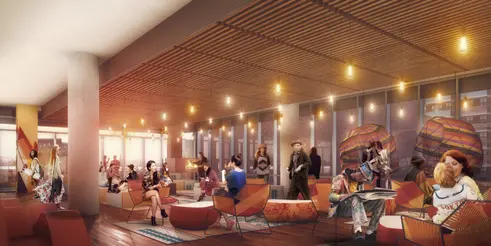 Lounge interior proposed in previous design (Blesso Properties)
Lounge interior proposed in previous design (Blesso Properties)
In addition to these perks of co-living, 24 Boerum will also offer residential amenities such as bike storage, shared recreational space, a fitness center, laundry, a high-rise lounge, and rooftop terraces. The complex will also provide a community facility on the ground floor and a market hall, which opens onto a triangular plaza that will be created between the building and the subway station.
In all, the building stays true to ODA’s characteristic shifting-cube aesthetic, evident in the firm’s other projects such as the 30-odd-story tower proposed at 678 Lexington Avenue off Billionaires’ Row; the twin-but-not-quite cubist stacks at 98 Front Street in DUMBO and 22-22 Jackson Avenue in Long Island City; Park Slope’s chamfer-corner condo ziggurat at 251 First; Eliot Spitzer’s glass cubes at 420 Kent Street on the Williamsburg waterfront; the playful proposal at Beth Rivka School; and many more. Of these, 24 Boerum is among the firm’s rare designs that embraces diagonals rather than strictly right angles; the nearby mid-rise rentals at The Rheingold and Denizen Bushwick, as well as the recently-completed, slice-roofed Bevel in LIC, are other examples.
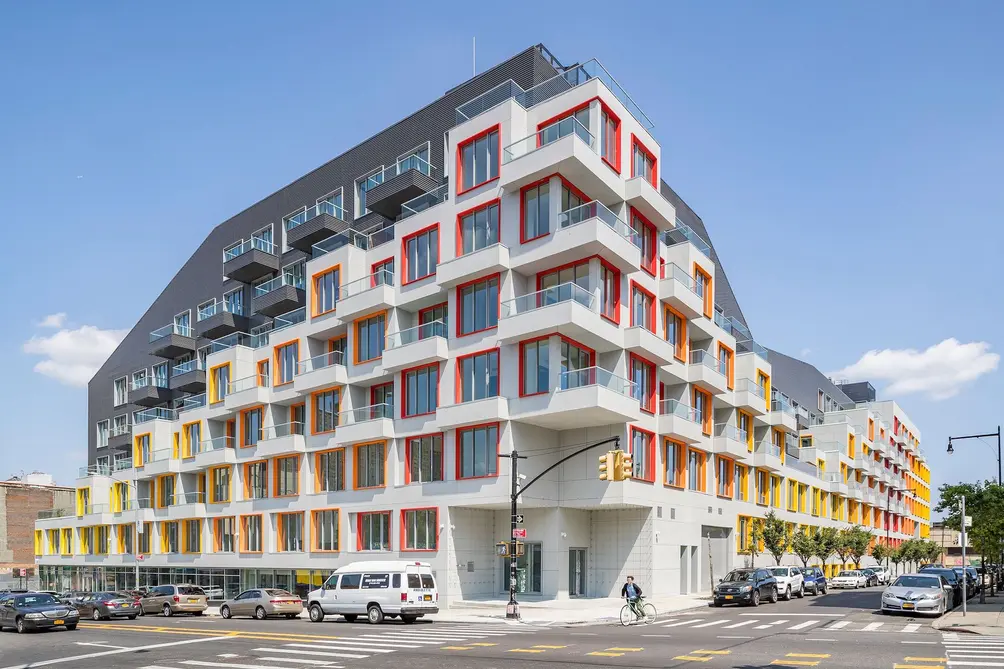 The Rheingold at 10 Montieth
The Rheingold at 10 Montieth
As the most densely-populated major city in the US for most of its history, New York has long been a laboratory of urban living solutions. The advent of co-living simultaneously reinvents an old New York typology for contemporary needs and joins established residential models such as condominiums, rentals, co-ops, townhouses, and single family houses.
Co-living, the product of the age of social media and tech start-ups, remains a novel concept on the city landscape, with large projects of the kind arriving only in recent years (the ALTA+ by Ollie co-living service at ALTA LIC is a major recent introduction in Queens, for instance). However, the idea of co-living is the oldest form of apartment living in New York, aside from the longhouses of local Native Americans. In the early 19th century, Manhattan’s elites would move up the island and abandon their downtown mansions, which were often cut up into crowded “rookeries” and rented out room by room to the working class. Over the course of the century, these would evolve into the notorious tenements, famously exposed by activist Jacob Riis in his seminal 1890 book How The Other Half Lives. At that time, “proper” apartment buildings were only beginning to be built in the city.
The luxury of modern co-living facilities is a far cry from the squalor of rookeries and tenements. However, the basic concept remains the same - savings via pooling of resources for single working professionals and small families, even if today's working professional is more likely to be found at a tech start-up rather than a textile sweatshop (though both may be running out of the same loft building, albeit renovated for modern-day tech needs). An insider story at 6sqft covers the lives of three young professionals living in a co-living community, where all three express appreciation for their close-knit community as much as they do for full-service amenities (furnished apartments, stocked kitchens, housekeeping, rapid repairs, etc.) that let them focus on the hectic pace of today’s professional and social lifestyles.


 6sqft delivers the latest on real estate, architecture, and design, straight from New York City.
6sqft delivers the latest on real estate, architecture, and design, straight from New York City.
